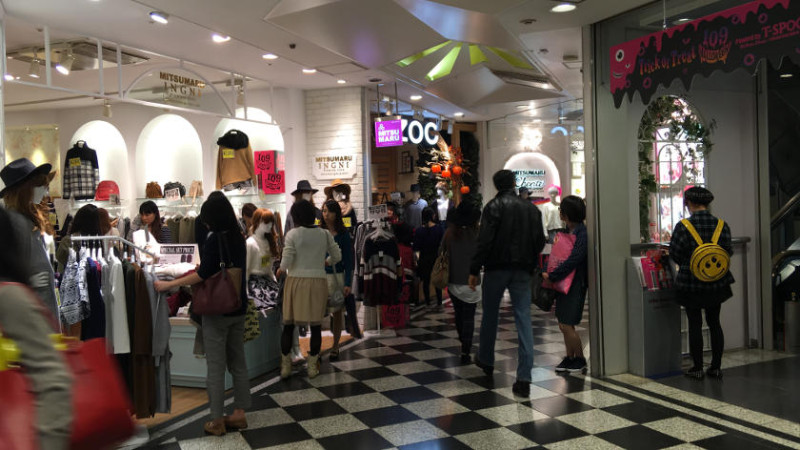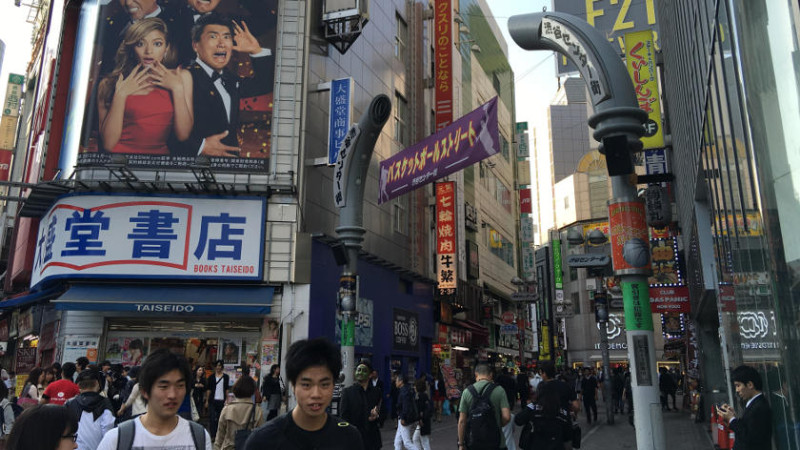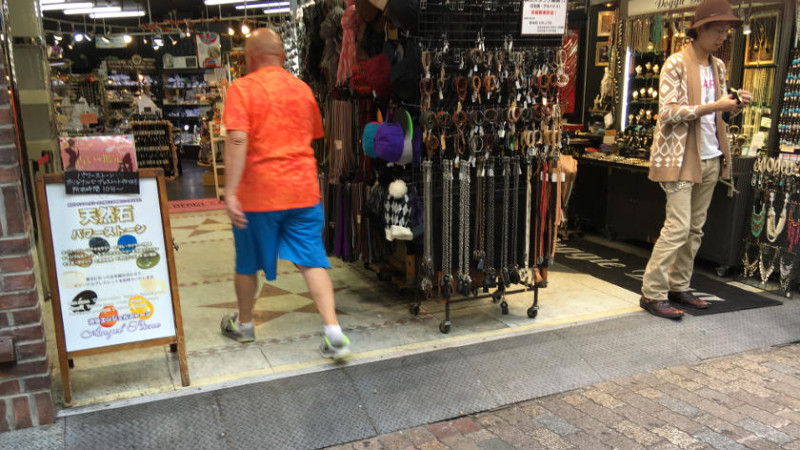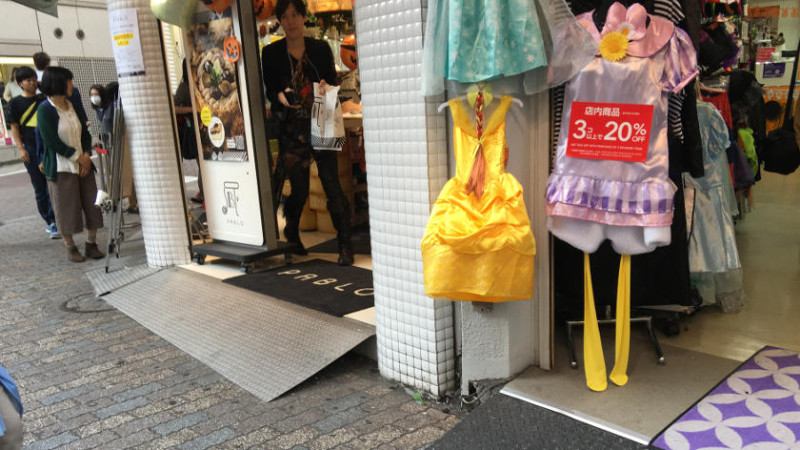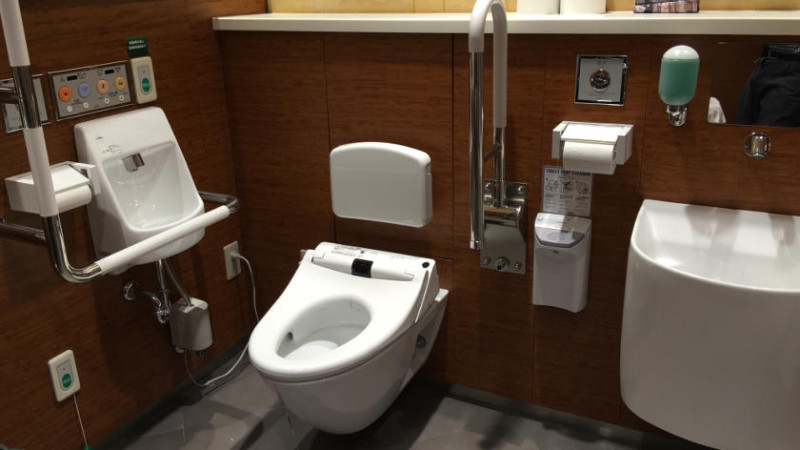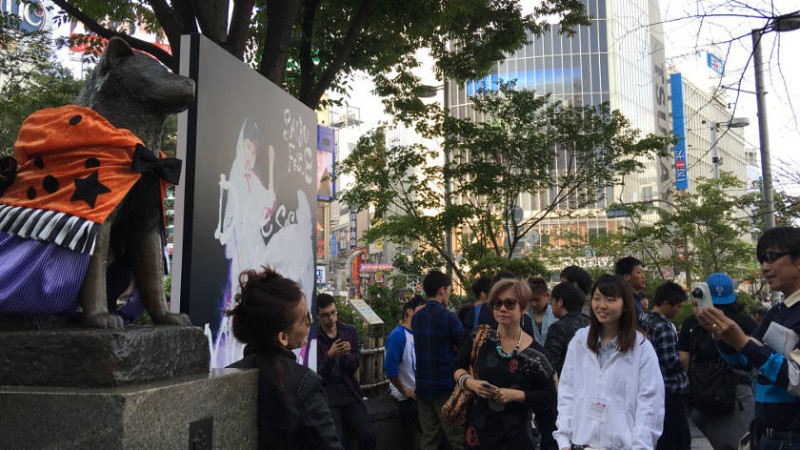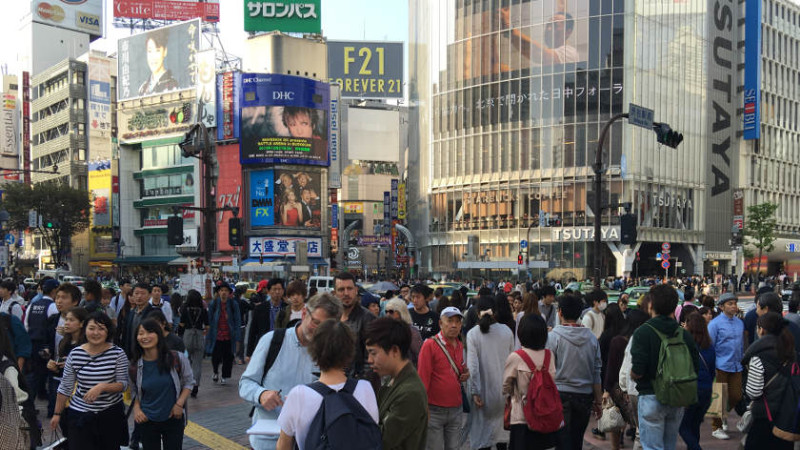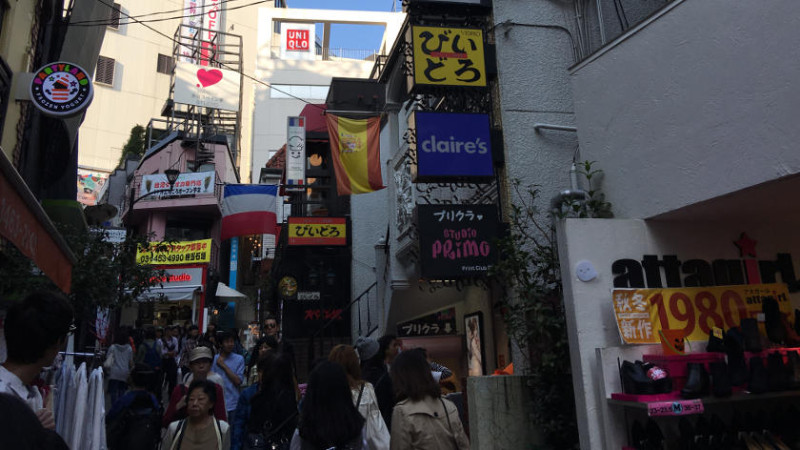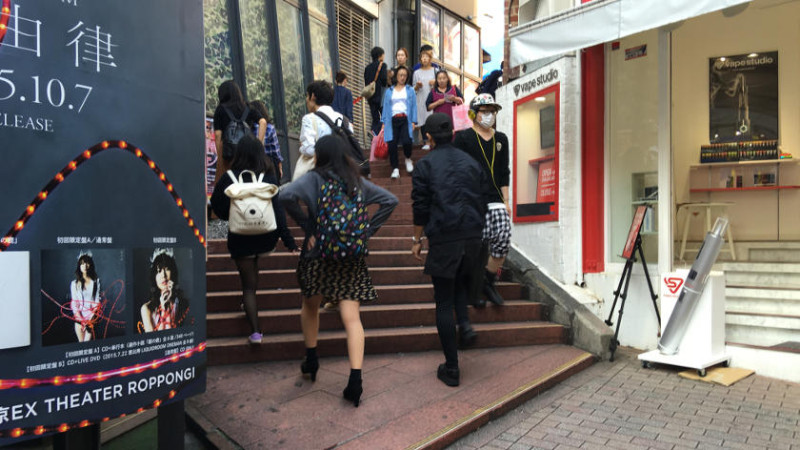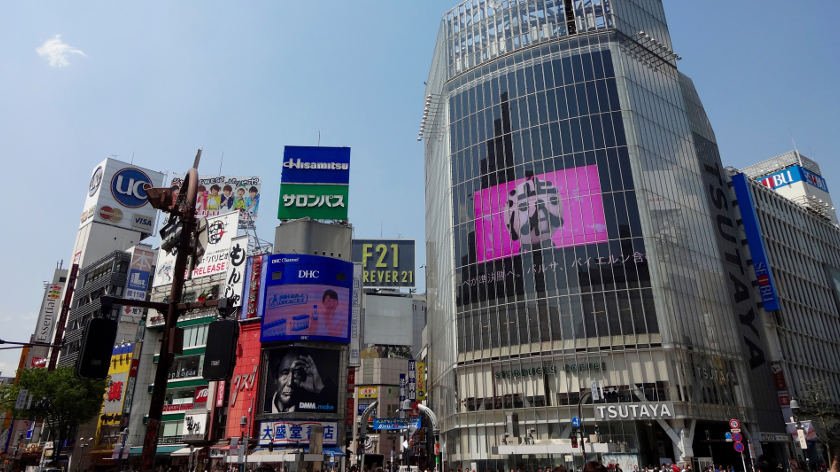
Known as a center for youth fashion and culture, Shibuya is a popular shopping and entertainment area that is full of lights, shopping, and crowds. As Shibuya is a large area, accessibility can of course vary with location. Many shops are accessible, but some are not. However, despite the crowds, Shibuya is a fun place to visit even in a wheelchair.
General
Shibuya was the site of a castle in which the Shibuya family resided from the 11th century through the Edo period. After the Yamanote Line opened in 1885, Shibuya eventually emerged as a railway terminal for southwestern Tokyo and eventually as a major commercial and entertainment center. Perhaps the most well known story is that of the dutiful dog, Hachiko. Hachiko would always wait at the station for his master’s return from work everyday. However, one day his master died at work but Hachiko waited every day until his own death, becoming a symbol of the station. A statue dedicated to him serves as a landmark for people to meet at and has become a tourist attraction in its own right.
Nowadays, Shibuya is a center for youth fashion and culture, and is the epicenter of Japan’s fashion and entertainment trends. There are more than a dozen major department stores in the area catering to all types of shoppers. The most recognisable landmark in Shibuya is the large, multi-directional, crosswalk near the Hichiko exit. Referred to as the “Scramble” (for obvious reasons), it features many gigantic video screens is often used in movies as an image of Japan – most famously in Lost in Translation.
Getting There
There are four stations that serve Shibuya Station (with multiple lines), so it will depend on where you are coming from.
- JR Shibuya Station (Saikyo, Shonan-Shinjuku, Yamanote lines)
- Keio Shibuya Station (Inokashira Line)
- Tokyu Shibuya Station (Den-en-toshi, Toyoko lines)
- Tokyo Metro Shibuya Station (Ginza, Hanzomon, Fukutoshin lines)
Clicking on the station name will show you a map of station layout, showing exits with elevators and the location of accessible toilets.
The entire area being renewed, as are the stations – making it difficult to find the best entrance. Even though some entrances are not accessible, ask the staff and they will help you to the accessible entrance, or at least point you in the right direction.
Accessibility
As this is a district, and not one specific location, this is only general accessibility information.
Hachiko and The Scramble
Hachiko is a great photo opportunity, however, you may need to wait your turn with many others wanting to pose with the faithful dog. In addition to the people lining up for pictures, the area is used as a landmark for friends to meet up. This means the area is filled with people who have their minds preoccupied and it can be hard to push yourself through if you are in a wheelchair or have difficulty walking. The nearby Scramble crosswalk is not just a famous place, it is a crossing that must be used to get to the shops from the station. The unique feature is that multiple roads feed into it, and, when it is the pedestrians’ turn to cross, you can cross in any direction. This means many people heading in different directions at once, and a large fast-moving crowd. If it looks intimidating, it is less dense around the edges.
Center Gai
Center Gai is located across the Scramble from Hachiko and is a series of local shops. From fashion to drug stores, to burgers. Most are single-store businesses and can be a bit small. While some have a step in, a surprising number have either no steps, or a ramp. Spain Slope (so-called because many feel it looks like a sloping street from Spain) has some boutiques but due to the slope, they can be difficult to enter. The street ends after around 100-meters in a set of stairs.
Department Stores
There are many different department stores in the area. All have elevators and accessible toilets. 109 is one of the most famous ones and is packed with girls – 109 Men’s is the same, but for guys. Both are great places to see the latest in Japanese fashion, but expect to wait to use the elevator.
Toilets
The safest bet for finding an accessible toilet is either within a station or at a department store. The department stores have cleaner toilets and are easier to find – many have one on each floor. However, the accessible toilets are not on the ground floor, and being a very busy area, expect to wait for the elevators – so, don’t put it off too long!
Conclusion
Anybody interested in modern Japan and youth culture must visit Shibuya. It is full of energy and exciting night or day. A majority of shops are accessible, and department stores are a good place to find accessible toilets. The biggest challenge for those with disabilities will be to fight through the crowds of tourists and young shoppers.
Video




